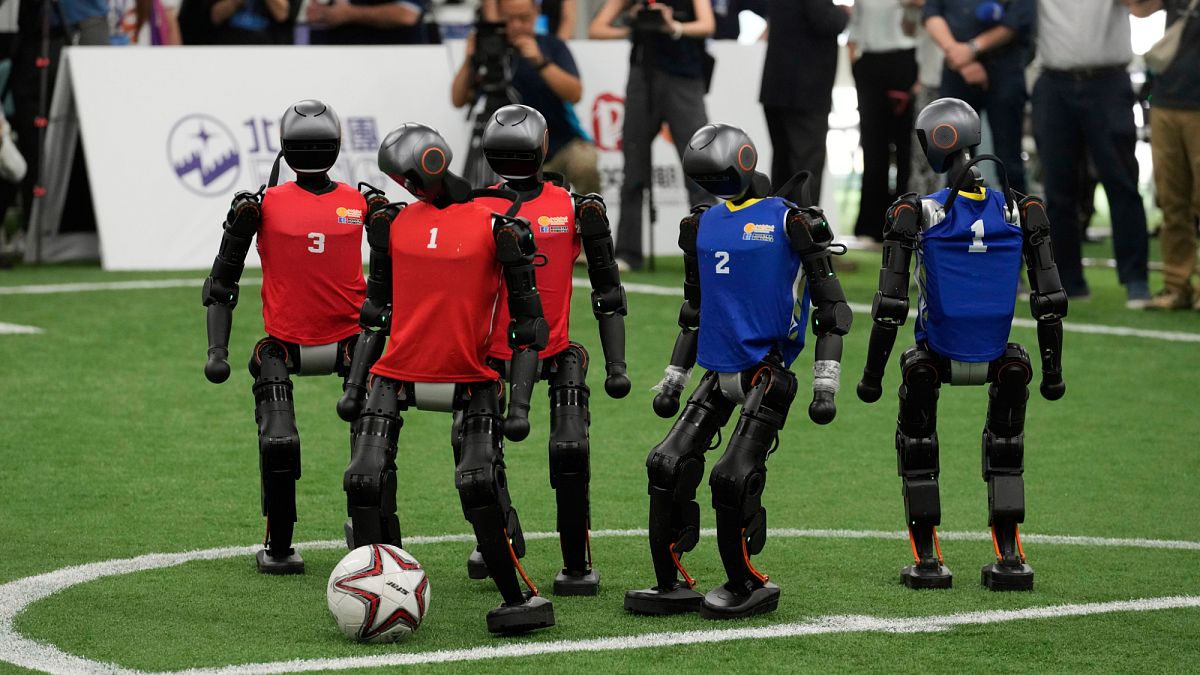

Amid the backdrop of evolving technology, the horizon appears ever-brighter with a series of initiatives and advancements that highlight human ingenuity and our collective drive toward a better future. From AI-powered robotics to autonomous transportation and lunar endeavors, each development reflects a mindful progression toward enhancing life on Earth and beyond.
In August, Beijing will transform into a hub of innovation during the inaugural World Humanoid Robot Games set from the 14th to the 17th. Held at the same venue as the Beijing 2022 Winter Olympics speed skating event, this gathering will showcase the dexterity and agility of robot teams from China and beyond. These AI-driven humanoid robots are engaged in rigorous training, honing their abilities in anticipation of competitive events designed to celebrate both technological advancement and human creativity.
Parallel to the inspiring world of humanoid robotics is the evolution of autonomous transport solutions. Lyft, a pioneer in ride-sharing, has announced its partnership with Baidu, a leading Chinese AI firm, to launch robotaxis in Europe by 2026. This collaboration intends to make these autonomous vehicles accessible in Germany and the United Kingdom through the Lyft app. The convergence of AI and automotive technology promises not only to streamline urban mobility but also to reduce emissions and enhance safety.
In a significant stride toward interstellar exploration, NASA is poised to announce plans for a nuclear reactor on the Moon. This marks a remarkable initiative under the leadership of NASA’s interim administrator, who brings a wealth of experience from the realms of transportation and media. The endeavor underscores NASA’s commitment to sustainable lunar habitation and paves the way for future missions aimed at extending human presence in space. The technological and environmental promise of a lunar reactor holds the potential to transform energy generation for extraterrestrial outposts.
While technological frontiers are being explored, environmental challenges on our planet demand equal attention. Researchers have made a critical breakthrough in identifying the bacterium responsible for the devastating sea star wasting disease that has ravaged the sunflower sea star population along the western coasts of North America. Over the past decade, this disease, attributed to the bacterium Vibrio pectenicida, has led to a catastrophic 90% reduction in sunflower sea stars, equating to a loss of 5.8 billion individuals. By pinpointing the microbial cause of this epidemic, scientists are hopeful that effective measures can now be devised to stem the decline and facilitate recovery for this critically endangered species.
The convergence of these feats in robotics, artificial intelligence, space exploration, and environmental science illustrates a robust commitment to innovation and sustainability. As we navigate through these exciting changes, the path forward combines curiosity with responsibility, ensuring that technology uplifts humanity and nurtures the delicate balance of our planetary ecosystems. While advancements in each of these areas promise distinct benefits, together they weave a narrative of progress that embraces both the challenges and opportunities of our dynamic world.
Source: {link}
